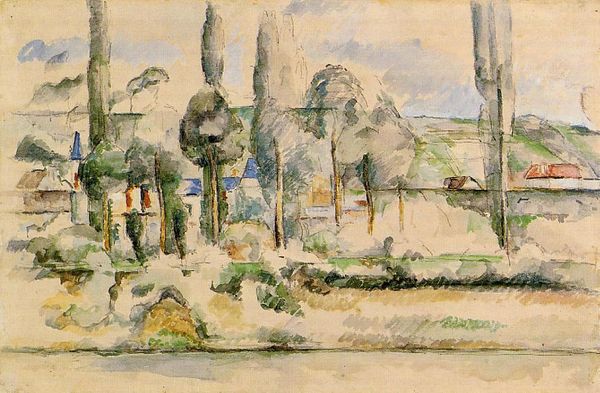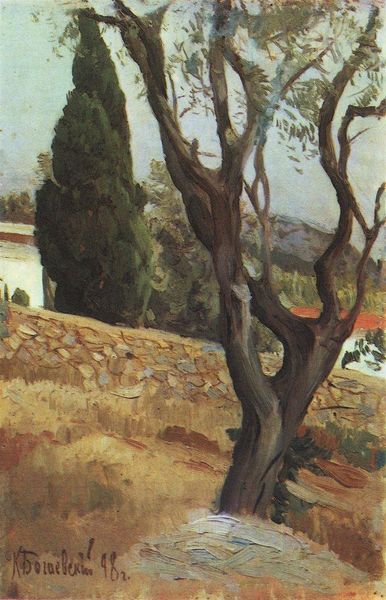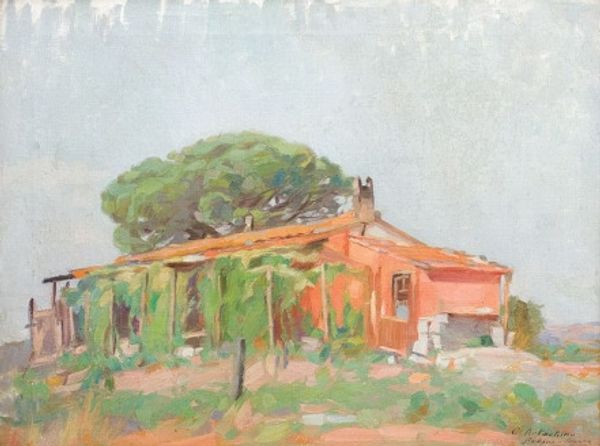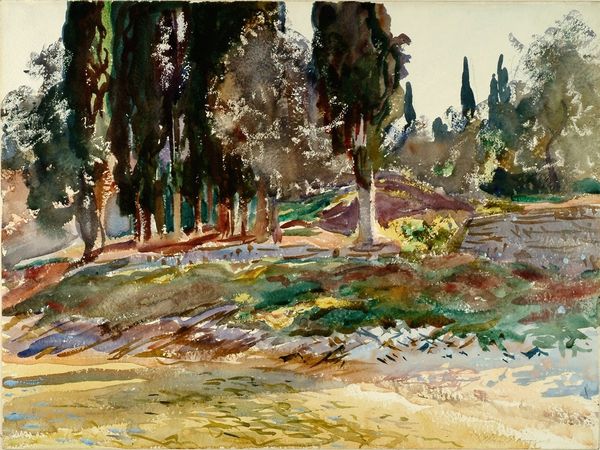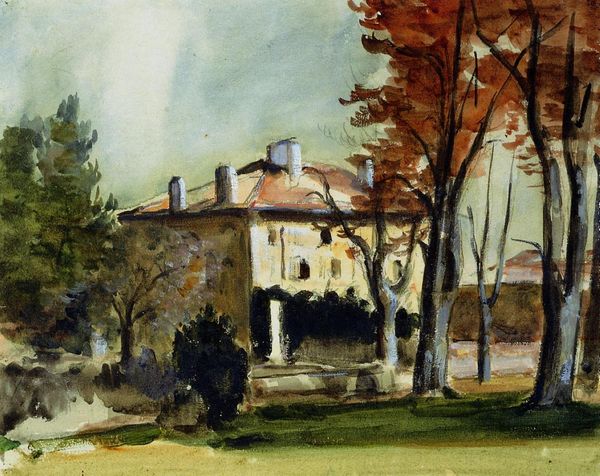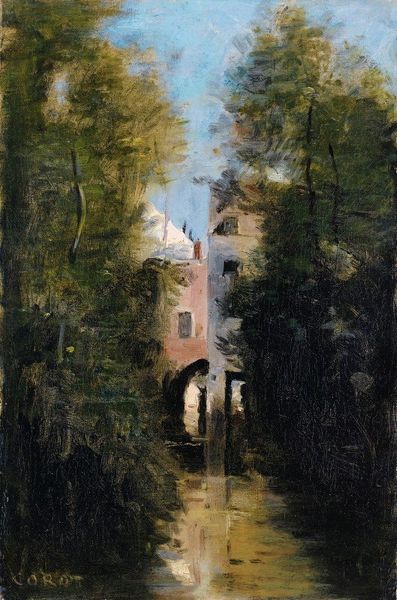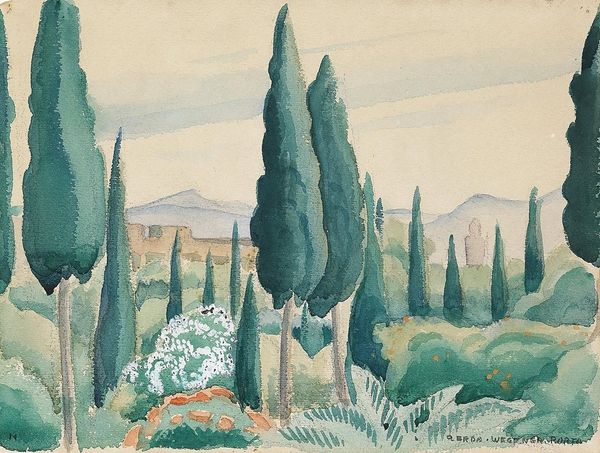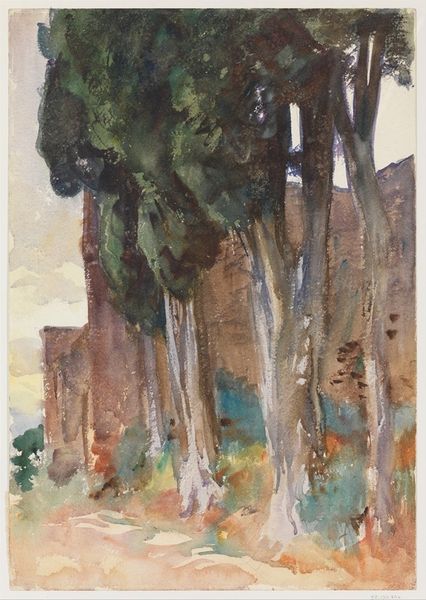
Dimensions: 34.93 x 49.53 cm
Copyright: Public domain
Editor: This is John Singer Sargent's "Corfu," painted in 1909, likely en plein air. The quick, fluid watercolors give it a very light, airy feeling. How do you interpret this work, considering Sargent's broader body of work? Curator: Well, on the surface, it's a beautiful, seemingly simple landscape. But considering Sargent's complex relationship to the established art world, and the inherent politics of landscape painting – who gets to represent which land, and for whom? – I wonder if there is an inherent statement within his choice of representing Corfu? He often skirted the edges of portraiture conventions, playing with gender and class. How might we apply that lens here? Is there a quiet disruption at play even within the 'safe' genre of landscape? Editor: That's fascinating. I hadn't considered the socio-political aspects. The location – Corfu – could be read as a symbol of a specific power dynamic at the time, during an era of immense European growth at the expense of marginalized people. Curator: Exactly. And Sargent, as an American expatriate, was inherently implicated in those dynamics. This painting isn't *just* a pretty scene; it’s a record of a particular gaze, a perspective shaped by privilege and power. Do you think the haziness and indistinct nature of the watercolor might obscure the details of the actual place, almost idealizing or even sanitizing the landscape and its inhabitants? Editor: Possibly. It definitely prompts a re-evaluation, pushing past a simple aesthetic appreciation. I think looking through the lens of social and political power allows the viewer to come face-to-face with their preconceptions. Curator: Indeed. And art like this allows to discuss the dynamics within social justice as well as the complex dynamics involved in imperialism.
Comments
No comments
Be the first to comment and join the conversation on the ultimate creative platform.



